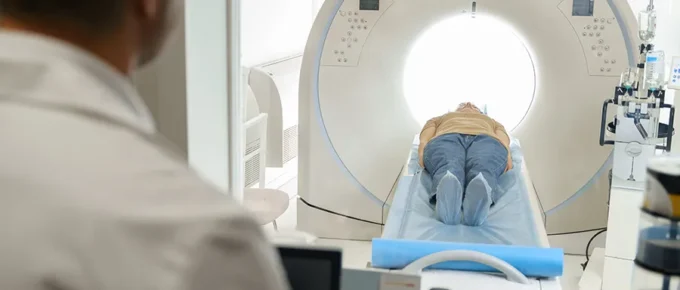
Learn how to recover maximum compensation after an accident that led to severe internal bleeding.
Internal bleeding is a severe yet frequently underestimated outcome of accidents. It often poses a silent but potentially deadly threat, making it imperative for victims to not only seek prompt medical care but also to be aware of their legal rights to financial compensation, which can significantly aid in their recoveries.
If you or a loved one is suffering from the consequences of internal bleeding after an accident caused by someone else’s negligence, don’t wait to get the help and answers you need. At Redondo Law, Miami catastrophic injury attorney Mike Redondo is well-versed in handling these complex cases.
With a deep understanding of the physical, emotional and financial toll these injuries can take, Mike is committed to providing compassionate and effective legal assistance.
Get started today by scheduling your free consultation.
What is internal bleeding?
Internal bleeding refers to the loss of blood that occurs within the body, outside of the circulatory system. Unlike external bleeding, where blood exits the body through a visible wound, internal bleeding occurs inside the body, often without immediate or visible signs.
This type of bleeding can occur in various areas of the body and is caused by damage to blood vessels or organs. The severity of internal bleeding depends on the location and the extent of the injury.
Common causes of internal bleeding
Internal bleeding is most commonly caused by vehicle crashes and slip-and-fall accidents, some of which may initially seem minor at the time. However, these situations can lead to different types of internal bleeding that require immediate medical attention to prevent further injury and loss of life.
Below are some of the most common causes of internal bleeding in accidents:
- Car accidents. High-impact car crashes can cause internal bleeding in various body parts, including the abdomen, chest and head. The force exerted during a collision can lead to organ rupture or vascular damage.
- Truck collisions. Due to their size and mass, trucks can cause severe accidents that lead to significant internal injuries. The impact of a truck collision can result in extensive internal bleeding, often more severe than in typical car accidents.
- Pedestrian, bicycle and motorcycle accidents. Victims of these types of accidents are particularly vulnerable to internal bleeding during collisions due to their lack of protective barriers. Internal bleeding often results from injuries to the abdomen, chest or head.
- Boating accidents. These can lead to internal injuries and bleeding from impact with another vessel, being struck by boating equipment, or being thrown into the water at high speeds.
- Slip-and-fall accidents. Falls, especially in older adults, can lead to internal bleeding. Hip fractures, for example, can result in bleeding around the hip joint, and falls that result in traumatic brain injuries can cause brain bleeds.
It’s important to note that symptoms of internal bleeding might not always be apparent immediately after an accident, making it crucial for anyone involved in such incidents to seek medical evaluation as soon as possible, even if they feel fine initially.
Can whiplash cause internal bleeding?
Whiplash is a neck injury resulting from the rapid, forceful back-and-forth movement of the neck, similar to the cracking of a whip. It commonly occurs in rear-end car accidents and primarily affects the muscles, tendons and ligaments in the neck, leading to symptoms like neck stiffness and headaches.
While whiplash itself does not cause internal bleeding, severe accidents capable of causing whiplash can also result in additional unseen injuries like internal bleeding. So, even if whiplash is your only apparent injury, it’s crucial to be evaluated by a medical professional for other possible head trauma that could lead to internal bleeding.
Why social media can destroy your car accident claim
Learn what to avoid on social media so you don’t ruin your chance at compensation after an accident.
How do you know if you are bleeding internally after an accident?
Internal bleeding symptoms can be different depending on the location and severity of the bleeding, but some common signs to look out for include:
- Shortness of breath. If bleeding occurs in the chest or lungs, it may lead to breathing difficulties or shortness of breath.
- Dizziness and weakness. A reduction in blood volume due to internal bleeding can lead to symptoms like lightheadedness, dizziness or a general feeling of weakness.
- Headache and loss of consciousness. If bleeding occurs in the brain, it can lead to a severe headache, changes in vision, loss of balance, confusion and even loss of consciousness.
- Abdominal pain and swelling. Bleeding inside the abdomen cavity can cause significant pain and noticeable swelling or tightness in the stomach area. The area might feel rigid or firm to touch.
- Blood in urine or stool. This could be a sign of internal bleeding in the kidneys or gastrointestinal tract.
- Nausea or vomiting. Nausea and vomiting may indicate bleeding in the stomach, especially if the vomit has a coffee-ground-like appearance.
- Bruising. Deep bruising or a purplish area on the skin, especially in the abdomen or sides, can indicate internal bleeding.
- Chest pain. Internal bleeding in areas around the heart can cause chest pain or an irregular heartbeat.
- Low blood pressure. Severe internal bleeding can lead to a drop in blood pressure, making you feel faint or causing you to lose consciousness.
- Shock. In severe cases, internal bleeding can lead to shock, a critical medical condition characterized by the failure of the circulatory system to supply adequate blood flow to the body’s tissues and organs, which can lead to death. Symptoms can include clammy skin, rapid breathing and/or pulse, a blue tinge to the lips or fingernails, and feeling weak, dizzy or confused.
Please note that symptoms of internal bleeding can sometimes be delayed, appearing only after a significant amount of blood has been lost, making early detection and treatment key to managing it effectively.
Miami-Dade police officer returns to work after recovering from catastrophic injuries
In 2022, Miami-Dade Police Officer Matthew Larsh was involved in a head-on collision with an SUV, resulting in severe injuries, including multiple fractures and internal bleeding, which necessitated the use of a ventilator.
Despite these challenges, Larsh’s resilience led to his release from the hospital after nearly a month and subsequent progress through 2 months of physical therapy. Remarkably, just 9 months post-accident, he returned to work, serving in the traffic homicide division investigating crashes.
His story underscores the severe yet survivable nature of internal bleeding injuries and is a testament to the importance of immediate medical attention and dedicated rehabilitation in overcoming serious accident-induced injuries.
How long does internal bleeding take to show symptoms?
The time it takes for symptoms of internal bleeding to appear can vary widely, depending on factors like the severity of the bleeding, the location of the injury and the individual’s overall health.
In some cases, symptoms may be immediate, especially if the bleeding is severe. However, in other instances, symptoms can take hours or even days to become evident. This delayed onset is particularly concerning because it can lead to significant blood loss or damage before the individual realizes the severity of their condition.
Can you have a brain bleed and not know it?
Yes, it is definitely possible to have a brain bleed (also known as a brain hemorrhage) and not be immediately aware of it, especially in cases where the bleeding is small or slow.
The symptoms might be subtle or develop gradually, making them easy to overlook or attribute to less serious issues. However, even a minor brain hemorrhage can become dangerous and potentially life-threatening over time, as it can lead to increased pressure within the skull, damage to brain tissue and other complications.
It’s crucial to seek medical attention if you experience any unusual symptoms after a head injury or for no apparent reason, such as headaches, nausea, dizziness, changes in vision, confusion, weakness, or difficulty with coordination or speech.
How long can a brain bleed go undetected?
A minor brain hemorrhage can cause very subtle symptoms that gradually worsen over days or even weeks in some cases, particularly in older adults. However, even symptoms that take weeks to develop can escalate quickly once they begin to manifest, so it’s crucial to seek early diagnosis and treatment to reduce the risk of severe outcomes.
What do doctors do for internal bleeding?
Generally speaking, the first step in treating internal bleeding is to stabilize the patient. This may involve administering fluids and blood transfusions to manage blood loss and maintain blood pressure.
Next, doctors often use diagnostic tools like CT scans, ultrasounds and MRI scans to locate and assess the extent of internal bleeding. Endoscopy may also be used in cases of suspected gastrointestinal bleeding.
Once the location and extent of the internal bleeding are discovered, doctors may use the following approaches to stop further bleeding:
- Medication. In some cases, blood-clotting drugs may be used to control the bleeding.
- Minimally invasive procedures. For certain types of internal bleeding, such as in the gastrointestinal tract, doctors may use endoscopic procedures to locate the bleeding and cauterize (burn) the affected vessel to stop the bleeding.
- Surgery. In cases of severe or uncontrolled bleeding, or when the bleeding is due to injuries that require repair (like organ rupture), surgery might be necessary. Surgeons will open the affected area to find and stop the bleeding and repair any damage.
Additionally, after addressing the immediate bleeding, patients will often need supportive care, which can include further transfusions, monitoring in an intensive care unit, and treatment of any underlying conditions that contributed to the bleeding.
Can I file a lawsuit for an accident that causes internal bleeding?
Yes, you can file a lawsuit for an accident that causes internal bleeding, as long as the accident was due to someone else’s negligence or wrongdoing. In Florida, if you or a loved one suffers injuries or wrongful death due to the actions or negligence of another party, you’re entitled to seek compensation through a personal injury lawsuit.
This process typically involves proving the following:
- Duty of care. The other party had a duty to act or behave in a certain way to prevent harm (e.g., drivers have a duty to follow traffic laws).
- Breach of duty. The other party failed to fulfill that duty (e.g., a driver was distracted, speeding or driving recklessly).
- Causation. This breach of duty directly caused the accident and your injuries.
- Damages. You suffered quantifiable losses as a result of the accident, such as medical expenses, lost wages, and pain and suffering.
Because the process of filing a lawsuit can be complicated, it’s often advisable to consult with a personal injury attorney who can provide guidance on the viability of your case and the steps involved in the legal process to ensure you get the full compensation you deserve.
Florida statute of limitations
Understand the time limits for filing a personal injury claim in Florida.
Will my future medical needs and lost income be covered after an accident that results in serious injuries?
Yes, when filing a lawsuit for an accident that resulted in a serious or catastrophic injury like internal bleeding, various types of compensation (also known as damages) may be sought to cover both past and future medical needs, lost income and other related expenses.
These types of compensation are generally categorized as follows:
- Economic damages. These cover direct financial losses, such as current and future medical expenses, lost wages, and any other quantifiable costs incurred due to the injury. This includes long-term health care needs and any loss of earning capacity.
- Non-economic damages. This compensation addresses the more subjective impacts of the injury, like pain and suffering, emotional distress, and loss of enjoyment of life. It recognizes the non-financial hardships and changes to your quality of life.
- Punitive damages. If the defendant’s behavior was especially reckless or egregious, courts may award punitive damages. The purpose of these damages is to penalize the wrongdoer and prevent similar actions in the future, rather than to provide compensation to the victim for their specific losses.
It’s important to note that the specific types and amounts of compensation will depend on the details of your case, including the severity of your injuries and the impact on your life. A personal injury attorney can help assess all potential areas of compensation and work to ensure that both your current and future needs are adequately addressed in any settlement or court award.
What evidence do I need to prove fault in a Florida accident?
To support a case involving an accident that resulted in internal bleeding in Florida, you’ll need to gather evidence that not only documents your injuries and their consequences but also establishes the fault of the other party involved.
Florida follows a comparative negligence system, meaning that the compensation you can receive may be reduced by your percentage of fault in the accident, so it’s crucial to build a strong case based on evidence that accurately represents the circumstances of the accident and minimizes your share of the blame.
Here’s the kind of evidence typically required:
- Medical records. These are crucial for proving the extent and nature of your injuries. They should include initial medical reports, treatment records, diagnoses, prognoses and records of any ongoing medical needs.
- Police or accident reports. If your injury resulted from a traffic accident or another incident that involved police, the police report can be pivotal in proving fault.
- Witness statements. Testimonies from people who saw the accident can provide an independent account of what happened, helping to establish fault.
- Photographic or video evidence. Photos or videos from the accident scene can demonstrate the circumstances that led to the injury, including road conditions, the positioning of vehicles and more.
- Expert testimony. In some cases, experts such as accident reconstruction specialists or medical experts may be needed to explain how the accident happened and how it caused your injuries.
- Financial records. To claim economic damages, you’ll need evidence of financial losses, like pay stubs for lost wages and bills for medical expenses.
- Personal records. Keeping a diary or notes about your daily pain levels, challenges, and how the injury affects your life can support a claim for non-economic damages.
It’s advisable to work with a personal injury attorney who can help gather and present this evidence effectively, negotiate with insurance companies, and, if necessary, take your case to court.
Were you in an accident that resulted in internal bleeding? Get help from a Miami injury attorney.
If you’ve been injured in a serious accident in South Florida, you can trust experienced Miami accident attorney Mike Redondo to help you get the compensation you deserve.
With a unique background that includes representing insurance companies in his early career, Mike Redondo has an insider’s perspective on how these companies operate to minimize liability in personal injury cases. Now, he channels this invaluable experience into fighting for the maximum settlement awards and judgments for accident victims like you.
At Redondo Law, we take pride in serving a diverse clientele, offering services in both English and Spanish across Miami-Dade County and South Florida. This ensures that language barriers will never stand in the way of your quest for justice.
Contact Redondo Law using the form below to schedule a free consultation, and take the first step toward recovery and justice.



